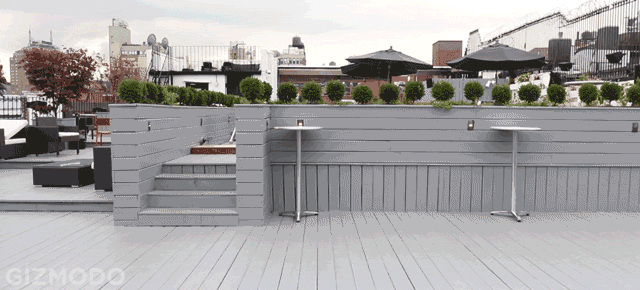To a surprising number of engineers and innovators, the future of transportation has only one wheel. But the future, at least when I’m driving, is pretty wobbly.
This is the third generation of Focus Designs’ Self-Balancing Unicycle. It’s a 12kg, $US1800 personal mobility device with a 20km/h top speed, a range of up to 16km, and a riding experience unlike anything you’ve ever thrown a leg over. Unless you’ve thrown a leg over a unicycle. Which, aside from a brief fling on a different motorised unicycle thing, I haven’t.

Conceptually, it’s easiest to think of the SBU as half of a Segway: a motorised, battery-powered, self-balancing wheeliemobile that’s controlled by the rider shifting his or her body weight to lean forward or back. Like a Segway, the further forward you lean, the faster you go; leaning backward brings you to a stop. Keep leaning, and the machine zips along underneath you, forever trying not to fall on its face.
But unlike Dean Kamen’s mobility machine, the SBU offers no form of side-to-side stability. That’s up to you, pal.
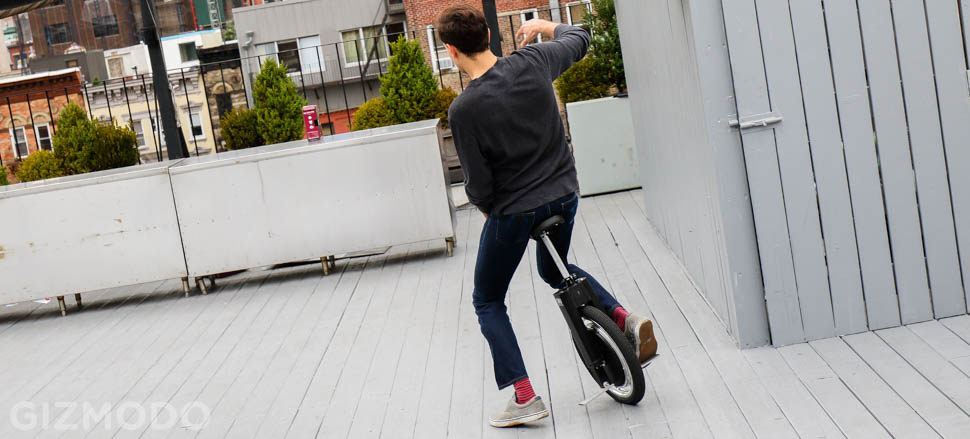
Balance not included.
That wasn’t too easy for me — mainly, I think, because I brought a lot of two-wheeler riding habits with me when I saddled up. Unicycling, any juggler will assure you, is completely different from riding a bicycle.
The first bad habit you have to break while riding the SBU is your semi-terrified desire to grab onto the seat with both hands (and maybe scream). The plastic guard at the front of the saddle isn’t there for you to white-knuckle grasp while riding, it’s a carrying handle. If you wanna stay upright, you’ve got to swing those arms wide.

The second two-wheeled instinct that will lead you astray is your ingrained assumption that you turn by leaning. With naught but a single wheel beneath you, survival depends on keeping your body as upright as possible, leaning neither left nor right. Turns, then, are accomplished by swiveling your hips. Sounds simple enough, but you just try telling your brain that 25 years of leaning into curves is suddenly no bueno.
Luckily, you’ll end up doing a lot of zig-zagging in your first few rides on the SBU. It’s an easy way to approximate balance, staying upright by pointing your hips in the direction that you’re currently falling. That’s why, in the GIF at the top of this post, it looks like I’m navigating an invisible slalom.
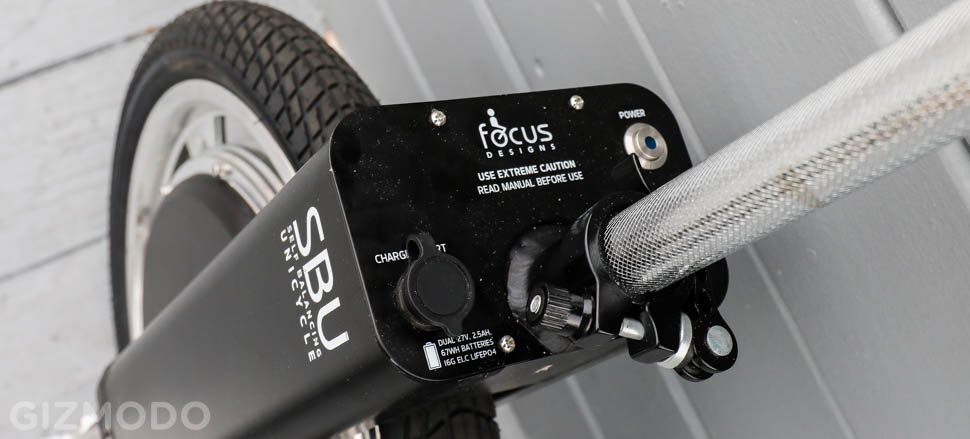
It’s actually quite easy to catch yourself if you’re headed for a tumble. You stop the SBU by leaning back, a natural reaction as you’re careening toward a collision. Throwing a foot to the side if you’re about to topple over sideways is equally instinctive.
The hope is that, after a while, the wobbles will give way to a sure-footed, graceful balance. In my time with the SBU, I didn’t quite reach that level of refined, effortless cruising. Focus Design says it takes 30 minutes to get the basic hang of it; while that’s probably accurate, I wouldn’t recommend that you start Frogger-ing through traffic with a mere half-hour of unicycling under your belt.
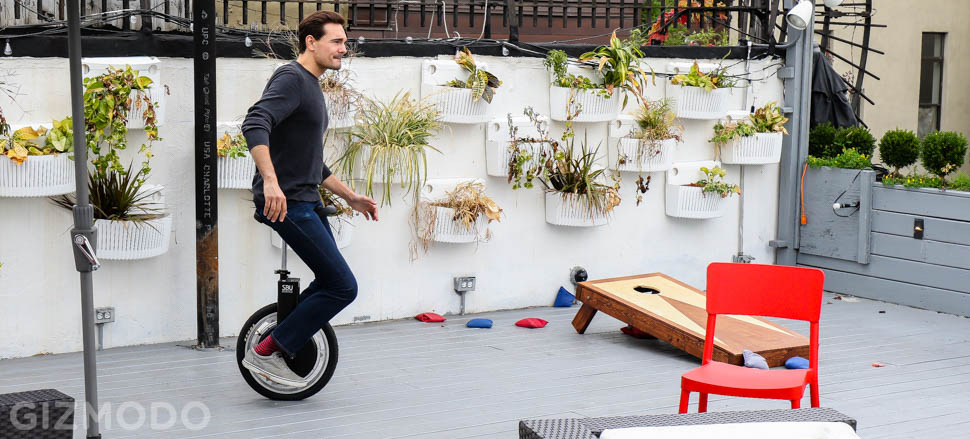
File under: Coolest dude ever
Frankly, it didn’t matter. Even if I never achieved the lithe, masterful uni-cruising seen in Focus Design’s promotional video, pinballing around on the SBU was a ton of fun. I never hit the little zipper’s speed limiter, which gently leans you back a touch if you pitch yourself too far forward in the quest for absolute terminal velocity, but even without bouncing off the 20km/h governor the speed feels amazing. You find yourself whizzing along at a pace much faster than you could ever run, without any visual indicator of a vehicle beneath you.
And while I didn’t attempt any seriously steep inclines with the SBU, it sprints across rolling hills with no drama. Between the silent motor and the chin-first riding position, you’ll feel like the world’s fittest jogger, powering around without ever losing your breath.
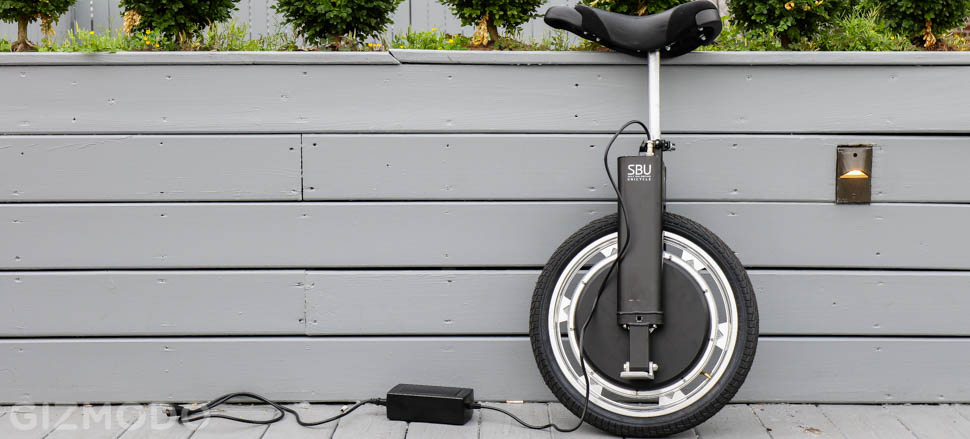
So who is this one-wheeled zoomer meant for? That’s kind of hard to define. The 12kg beefiness of this machine makes it super-sturdy if you take a tumble, but it also means lugging the SBU up a staircase isn’t exactly effortless. Hulking it around by the seat is a lot like transporting a 10kg tank from a propane grill — it’s not hard, but you’ll think twice about taking the stairs.
This kind of device is envisioned as a “last mile” solution, filling in the gaps in your commute that aren’t covered by public transportation. Motoring a silent, self-propelled unicycle down the bike lane would, admittedly, be way cooler than walking the 1.2km between my home and the train I take to work, and with a little more practice I might have actually tried commuting on the thing. But I’m not sure that foregoing 2.5km of foot-commuting would make up for trying to wrestle this thing through a turnstile or up five flights of steps at either end of the day.
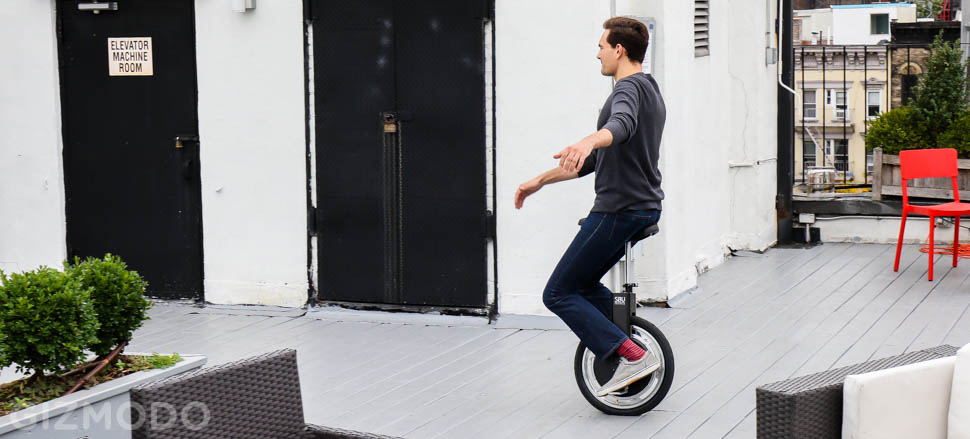
The SBU is not a pragmatic purchase. It’s about as carry-able as one of those folding commuter bikes, and heavier than just about any pedal-powered conveyance you’d want to carry to your cubicle — there’s no readily apparent way to lock the SBU up to a bike rack, and you’d probably want to bring it inside to charge it up anyway.
Maybe someday, through the lighter weight and lower pricing that the future usually brings to such devices, the SBU will become the perfect commuter-cycle. Right now, it’s the kind of thing you buy because you want a vehicle that makes people’s heads swivel around as you trundle by. One of the biggest reasons for buying into the future, after all, is to blow the minds of people stuck in the present.
Pictures: Michael Hession
